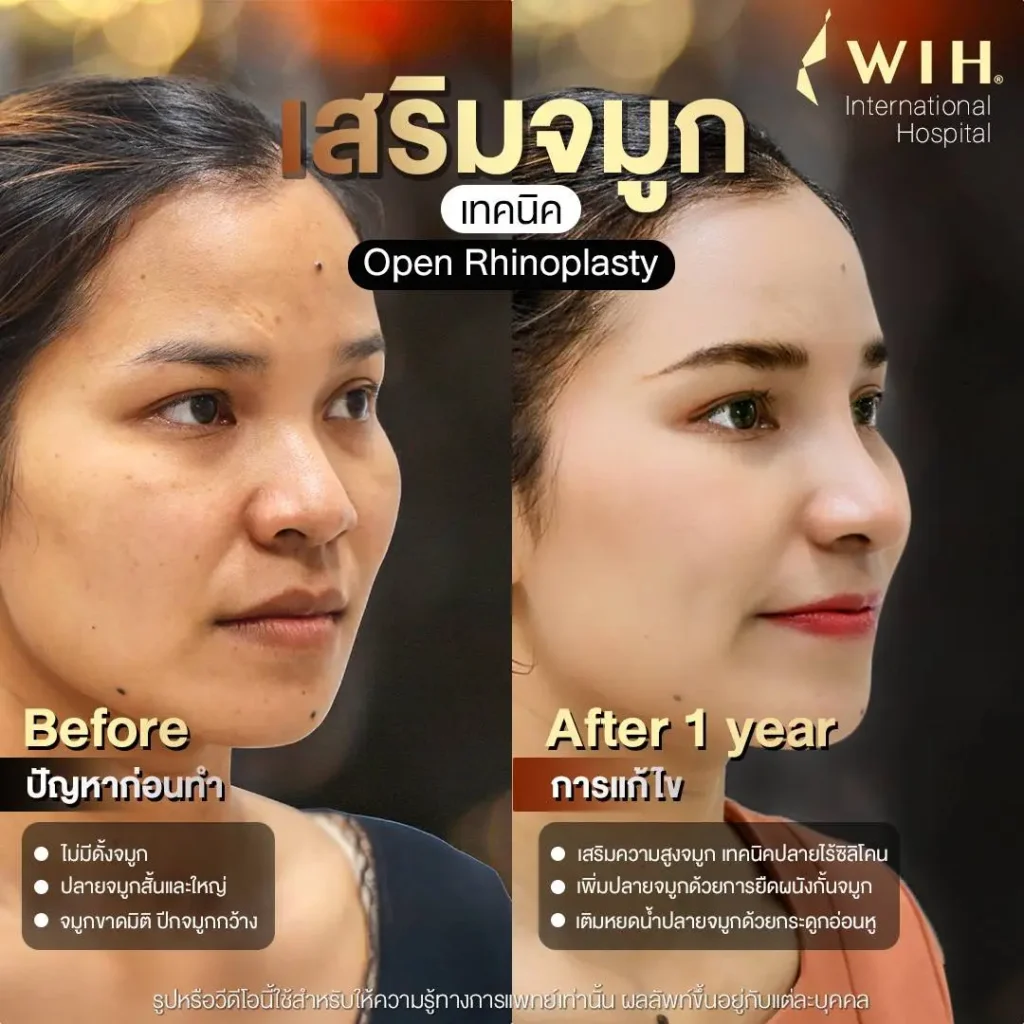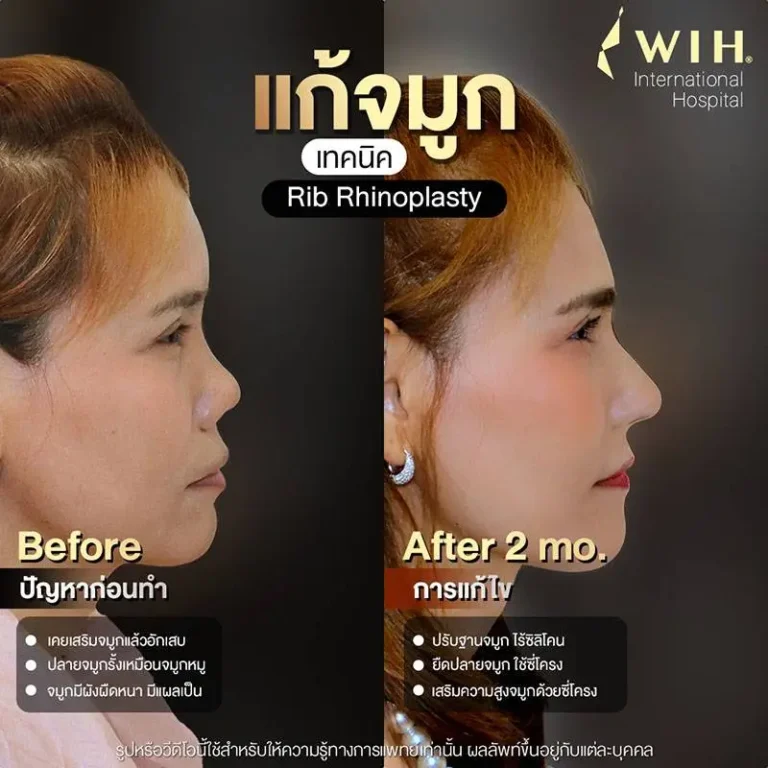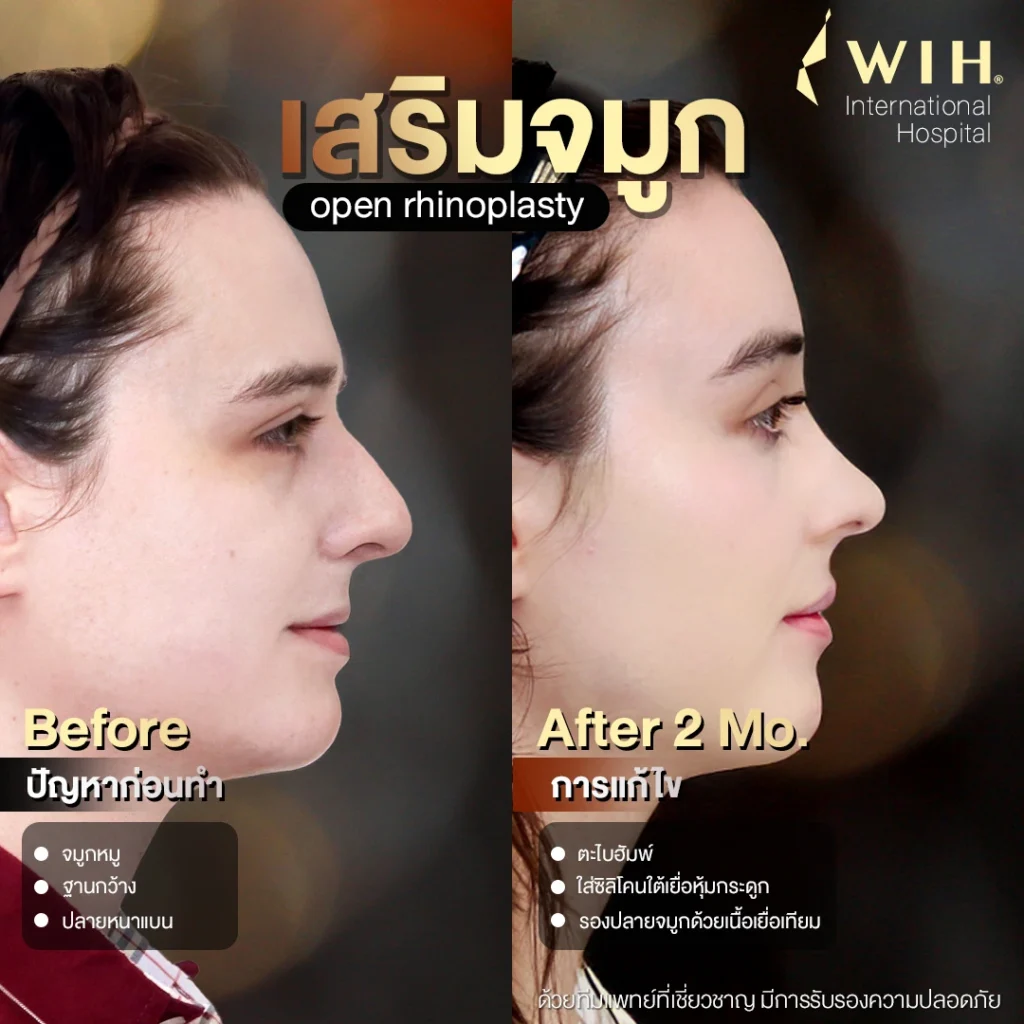Ideal for patients with thin nasal skin, bulbous noses, or upturned noses. Performed by a specialist in rhinoplasty surgery.
Open Rhinoplasty with Rib Cartilage: Structural Nasal Enhancement
Open Rhinoplasty with Rib Cartilage is a highly advanced and specialized surgical procedure, considered the gold standard for creating significant and long-lasting changes to the nasal structure. This technique is particularly suited for individuals with a low or flat nose bridge, a short nose, or those who require revision surgery after a previous rhinoplasty has left insufficient cartilage. By using the patient’s rib cartilage, a surgeon can build a strong, new framework that provides unparalleled support, volume, and natural aesthetics, resulting in a beautifully sculpted and harmonious nose.
What is Open Rhinoplasty with Rib Cartilage?
Open Rhinoplasty with Rib Cartilage is a cosmetic surgical procedure that uses the patient’s rib cartilage as a grafting material to rebuild and augment the nasal structure. This technique is named “open” because it involves a small incision across the columella (the tissue between the nostrils) to provide the surgeon with a full view of the nasal anatomy. The rib cartilage is harvested from a small incision on the chest and meticulously carved to create a custom-shaped implant for the nasal bridge and tip, ensuring a strong and natural-looking result.
Surgical Technique: The Procedure
The open rhinoplasty with rib cartilage procedure is a two-part surgery performed under general anesthesia.
-
Cartilage Harvesting: The surgeon makes a small, discreet incision (approximately 2-3 cm) below the breast crease to access and harvest a small piece of cartilage from the patient’s 6th or 7th rib. The incision is strategically placed to be easily concealed.
-
Nasal Incision: An open rhinoplasty incision is made across the columella, lifting the skin to provide the surgeon with an unobstructed view of the underlying nasal bone and cartilage.
-
Structural Rebuilding: The harvested rib cartilage is meticulously carved and sculpted to the desired shape. This graft is then secured to the existing nasal structure to create a higher bridge, a more defined tip, or to correct any deformities.
-
Closure: Once the nasal structure is perfected, the skin is redraped, and the columella incision is closed with fine sutures. A nasal splint is applied to the nose for support during the initial healing. The rib incision is also closed with sutures, and a compression bandage is applied.
Step-by-Step Preparation
- In-Depth Consultation: A thorough consultation with your surgeon is mandatory to discuss your aesthetic goals, assess your facial and nasal anatomy, and determine if rib cartilage is the best option for you.
-
Health Evaluation: A full physical exam, blood tests, and a CT scan of the rib area may be required to ensure you are in good health for the surgery.
-
Medication & Lifestyle: You will be instructed to stop taking blood-thinning medications, anti-inflammatory drugs, and certain supplements for at least two weeks before the surgery. You must also quit smoking and avoid alcohol for a few weeks before and after the procedure.
-
Fasting: Follow your surgeon’s strict fasting guidelines (typically no food or drink after midnight) on the day of the procedure.
Why Should You Choose WIH Hospital?
At WIH Hospital, your Open Rhinoplasty with Rib Cartilage is performed by a highly skilled surgical team with extensive experience in this complex procedure. This surgery demands a level of expertise in both cartilage harvesting and intricate nasal sculpting. Our surgeons have the deep anatomical knowledge and artistic vision required to utilize rib cartilage effectively, creating strong and aesthetically pleasing results that are harmonious with your unique facial features. We are equipped with state-of-the-art surgical facilities and dedicated aftercare services to ensure your safety, comfort, and a smooth recovery, making us a trusted choice for your rhinoplasty journey.
Immediate Post-Operative Care
Monitoring: You will be monitored in our recovery room as you awaken from anesthesia.
Compression: A compression bandage will be placed on the rib incision, and a splint will be placed on the nose.
Medication: You will receive pain medication to manage discomfort and antibiotics to prevent infection.
Head Elevation: It is crucial to keep your head elevated to minimize swelling and reduce bleeding.
Recovery Timeline
First Week: You will experience bruising, swelling, and mild discomfort in both the nose and the rib area. The nasal splint will be removed after approximately 5-7 days.
Weeks 2-4: The majority of the bruising will have faded, and the swelling will decrease significantly. You can typically return to work and light, non-strenuous activities.
Months 1-3: The initial surgical results become more apparent as the majority of the swelling subsides. You can resume most normal physical activities, but should still avoid contact sports.
6-12+ Months: The final, subtle swelling completely resolves, and the ultimate shape of your nose is fully visible. The scars from both incisions will continue to fade.
After-Care Instructions
Incision Care: Follow your surgeon’s specific instructions for cleaning the incision sites and changing dressings.
Activity: Avoid strenuous exercise, heavy lifting, and any activities that could put pressure on your nose or chest for at least 6-8 weeks.
Protect Your Nose: Be extremely careful to protect your nose from impact. Avoid wearing glasses that rest on the bridge of your nose for some time, as advised by the surgeon.
Scar Management: Your surgeon may recommend topical treatments or massage to help minimize scarring on the nose and chest.
What the Patient Needs to Know About Open Rhinoplasty with Rib Cartilage
- Dual-Site Surgery: This procedure involves two surgical sites—the nose and the rib. You should be prepared for recovery in both areas.
- Permanent Results: The rib cartilage is a robust, natural material that integrates with your body, providing a permanent and stable result that is less susceptible to warping or absorption.
- Low Risk of Rejection: Since the cartilage is autologous (from your own body), the risk of allergic reaction or rejection is virtually non-existent.
- Small Scar on Chest: While the incision is small and strategically placed, there will be a permanent scar on the chest.
Key Advantages of Open Rhinoplasty with Rib Cartilage
1. Ideal for Patients with Thin Nasal Skin or Revision Cases
This technique is suitable for individuals whose nasal tissue cannot support silicone implants. Rib cartilage can be used to reconstruct both the nasal tip and bridge, creating a well-balanced and durable structure.
2. Naturally Shaped Teardrop Nose
Refining the nasal tip to project beautifully with a subtle teardrop shape enhances facial softness and harmony, complementing all face shapes.
3. Effective Correction for Bulbous Nose
Rib cartilage allows for narrowing of wide nasal alae and reshaping of the nasal tip for a slimmer, more contoured appearance that suits the facial framework.
4. Safety and Long-lasting Results
Using the patient’s own cartilage reduces the risk of allergic reactions or implant displacement, while strengthening the nasal structure for long-term stability.
Why Choose Open Rhinoplasty with Dr. Chet?
- Dr. Chettasak (formerly Dr. Chettawut) is highly skilled in both Asian-style and Western-style rhinoplasty.
- He focuses on designing nose shapes that harmonize with each individual’s facial structure, enhancing softness and overall balance.
- A special nasal tip extension technique is used to create projection and definition tailored to the patient’s preferences.
- The teardrop-shaped tip adds a gentle, feminine touch to the nose.
- This approach is ideal for correcting short noses or bulbous tips using the open rhinoplasty method with rib cartilage.
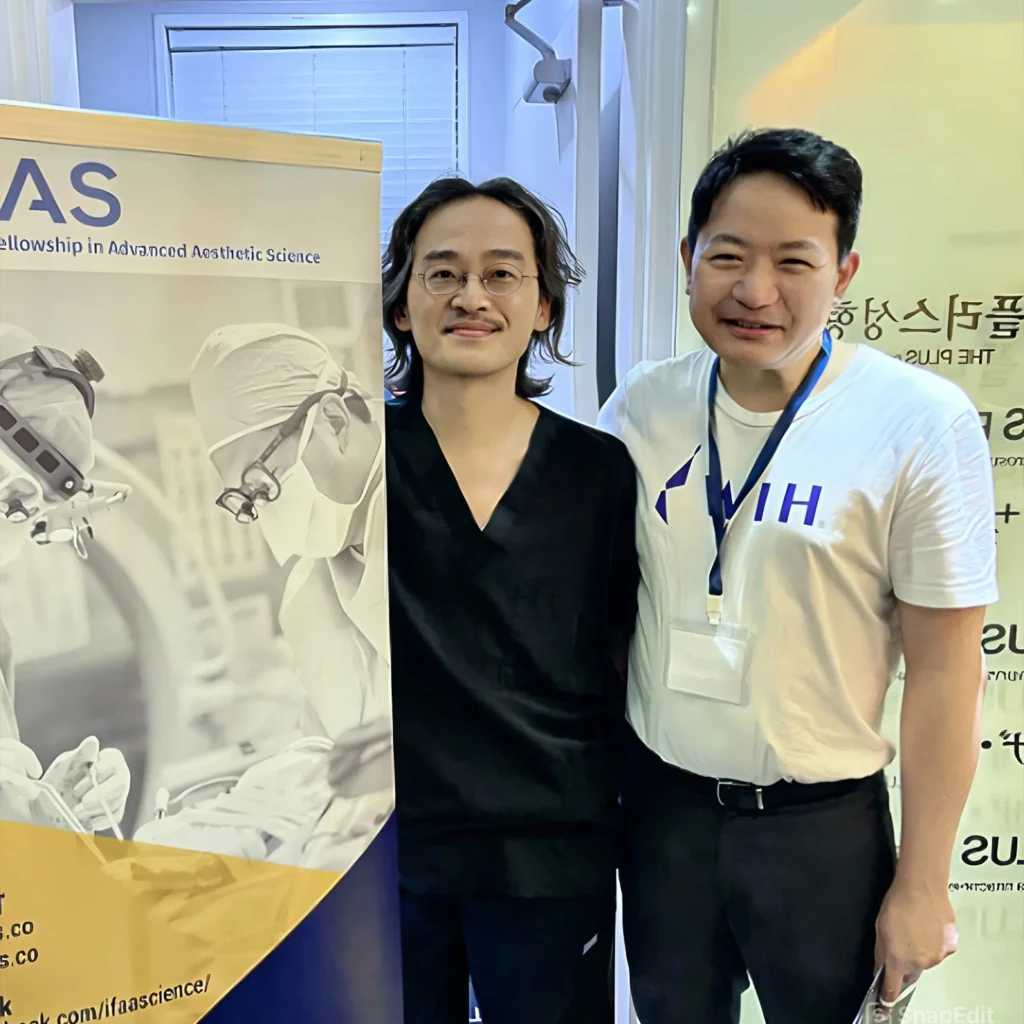
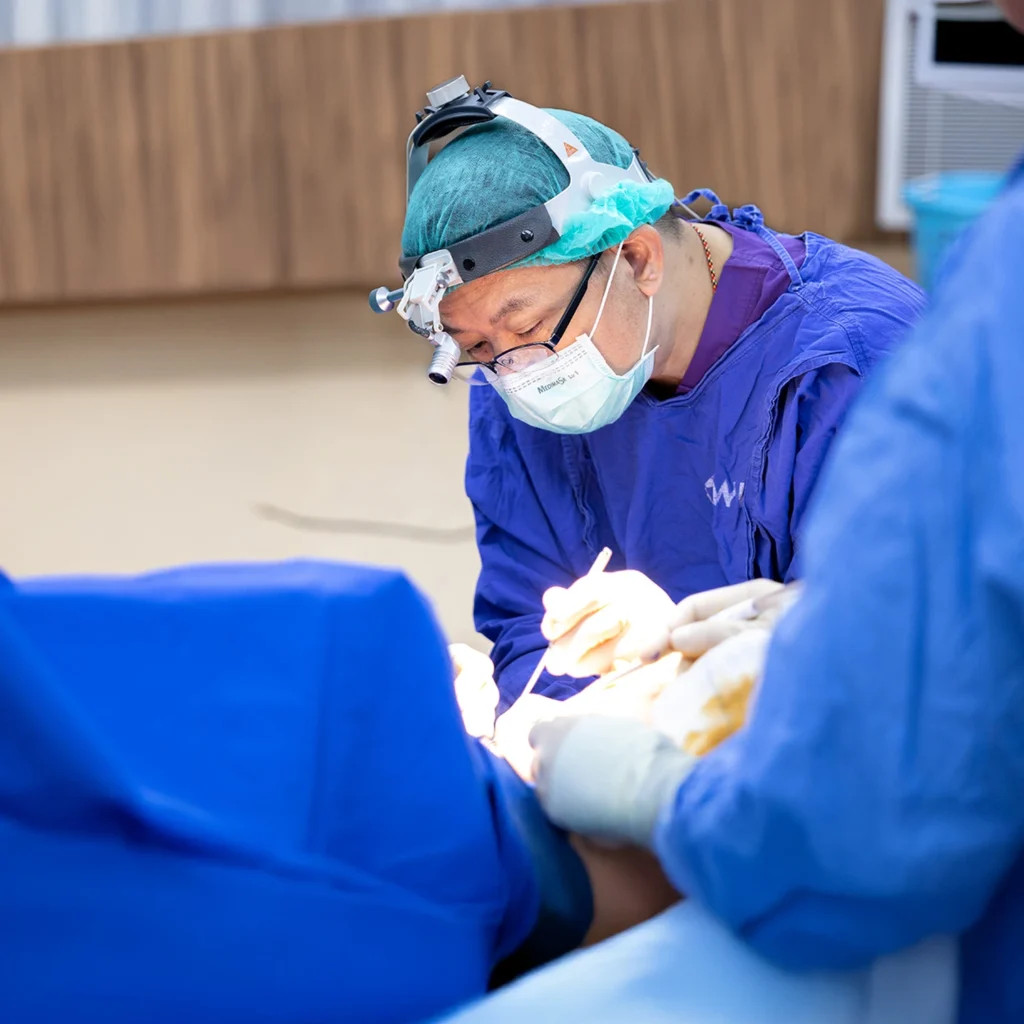
The Difference Between Western-Style and Korean-Style Nose Shapes
Western Style Nose (High-Profile Look)
- High and Defined Nasal Bridge: A prominent, naturally slim bridge that adds elegance and contour to the face.
- Projected Nasal Tip: Enhances facial dimension with a subtly lifted and defined tip.
- Sharp Nasal Structure: A straight, well-defined bridge without curves or indentations.
- Slightly Wider Nose: Balanced nasal width that complements the face—neither too narrow nor overly flared.
Korean Style Nose (Soft & Natural Look)
-
Smooth, Gentle Slope: A softly curved nasal bridge that creates a naturally refined appearance.
-
Slightly Projected Tip: Adds just the right amount of dimension to the face for a sweet, delicate look.
-
Soft Teardrop Tip: A subtle teardrop at the tip enhances overall facial harmony and softness.
-
Balanced Design: The size and shape of the nose are customized to complement each individual’s facial features.

Patient Testimonial
Why Choose Open Rhinoplasty at WIH Hospital?
✓ A team of experienced surgeons specializing in rib cartilage rhinoplasty
✓ Personalized techniques tailored to each individual’s facial structure
✓ International safety standards to minimize the risk of complications
✓ Smooth, natural-looking nasal contours with long-lasting structural support
Rib Cartilage Rhinoplasty with Diced Costal Cartilage (DCC): Exclusive Surgical Technique at WIH Hospital
At WIH International Hospital, we offer the advanced Diced Costal Cartilage (DCC) technique — a refined rib cartilage grafting method developed to ensure a natural-looking, smooth, and long-lasting result. This approach is particularly suitable for individuals who prefer not to use silicone implants or cannot use them due to extremely thin skin or a history of infection from previous rhinoplasty procedures.
Key Advantages of WIH Hospital’s DCC Technique
✓ Uses Your Own Rib Cartilage: Minimizes the risk of allergic reactions or rejection from synthetic materials
✓ Finely Diced Cartilage Promotes Tissue Integration: Enhances long-term stability and reduces the risk of graft absorption
✓ Smooth Nasal Contour: Prevents visible edges or ridges under the skin
✓ Minimizes Warping Risks: DCC avoids the common issues seen with block cartilage, such as bending or shifting over time
✓ Custom Nose Design: Allows precise shaping tailored to each individual’s facial structure
Who is DCC Suitable For?
✓ Individuals who want to avoid silicone implants and prefer using their own body tissue
✓ Patients with very thin nasal skin at risk of implant visibility or extrusion
✓ Those with a history of infection from silicone implants seeking a safer alternative
✓ Anyone looking for a natural-looking, durable nose enhancement solution
WIH Hospital: International Standard Center for DCC Nose Surgery
WIH International Hospital is a leading institution specializing in Diced Costal Cartilage rhinoplasty. Our team of experienced facial plastic surgeons uses modern surgical equipment and refined techniques to deliver optimal outcomes in both aesthetics and safety.
📌 If you’re looking for a safe, silicone-free nose augmentation solution — especially if you have thin skin or past complications from implants — the DCC technique at WIH Hospital is the ideal choice.
Consult with our rhinoplasty specialists today to plan a safe procedure and achieve the perfect result.
FAQ
The open rhinoplasty technique involves fully exposing the nasal structure, allowing the surgeon to make precise internal adjustments. It is especially suitable for correcting complex issues such as a crooked nose or a large nasal tip. In contrast, closed rhinoplasty focuses on minor modifications without fully opening the nasal framework.
Suitable for individuals with complex nasal concerns such as:
- Crooked nose
- Bulbous nasal tip
- Thin nasal skin
- Nasal hump
During the surgery, local anesthesia or general anesthesia is used, so you won’t feel any pain. After the procedure, you may experience some swelling and mild tightness, which can be managed with pain medication prescribed by your doctor.
In general, the recovery takes around 7–14 days. Swelling typically subsides within 1–2 weeks, allowing most patients to return to their normal activities. However, the final results may take 3–6 months to fully settle.
You should avoid intense workouts or any activities that might impact the nose for at least 4–6 weeks after surgery.
- Avoid smoking and alcohol for at least one week.
- Inform your doctor about your medical history and any medications you are taking.
- Refrain from eating or drinking for 6–8 hours before surgery if general anesthesia will be used.
Thread lifting for the nose may be effective for minor enhancements, but the results are not permanent and can vary depending on the quality of the threads and the doctor’s expertise. For more reliable and long-lasting results, surgical rhinoplasty is a more trustworthy option. It is recommended to consult with a qualified plastic surgeon before making a decision.


